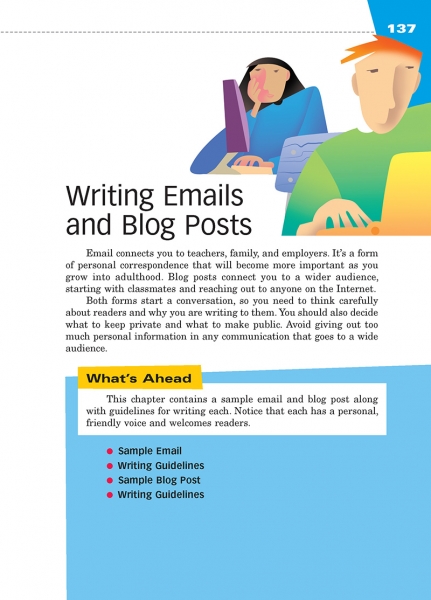Page 137 from

Start-Up Activity
Lead a discussion about digital communication. Ask how many students use the following apps: Snapchat, Instagram, Facebook, Twitter (and any others they suggest). Have students discuss why they prefer different types of digital communication for different purposes.
Teens tend to be avid cellphone chatters but may be much less interested in sending or receiving emails or writing or reading blog posts. However, help them see that these forms of digital communication are important in the world of work. Students won't be fully digitally savvy until they can use these platforms, as well.
Think About It
“I do love email. Wherever possible I try to communicate asynchronously. I'm really good at email.”
—Elon Musk

Start-Up Activity
Lead a discussion about digital communication. Ask how many students use the following apps: Snapchat, Instagram, Facebook, Twitter (and any others they suggest). Have students discuss why they prefer different types of digital communication for different purposes.
Teens tend to be avid cellphone chatters but may be much less interested in sending or receiving emails or writing or reading blog posts. However, help them see that these forms of digital communication are important in the world of work. Students won't be fully digitally savvy until they can use these platforms, as well.
Think About It
“I do love email. Wherever possible I try to communicate asynchronously. I'm really good at email.”
—Elon Musk